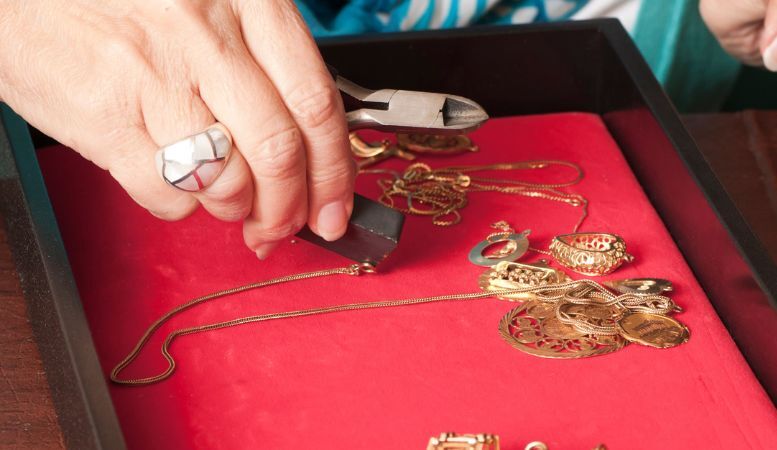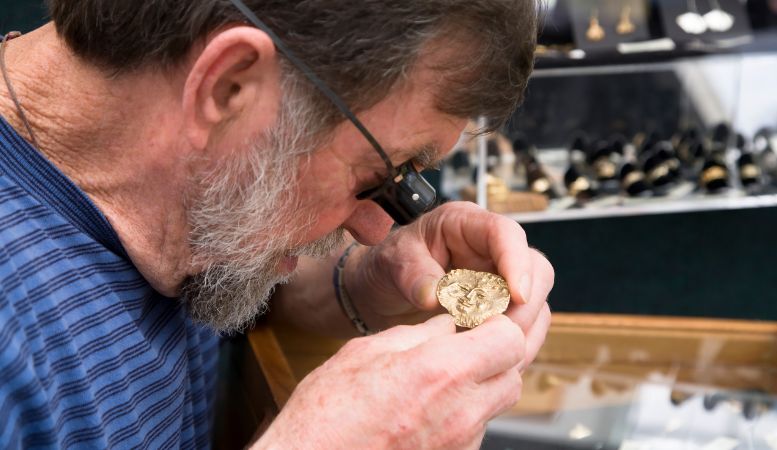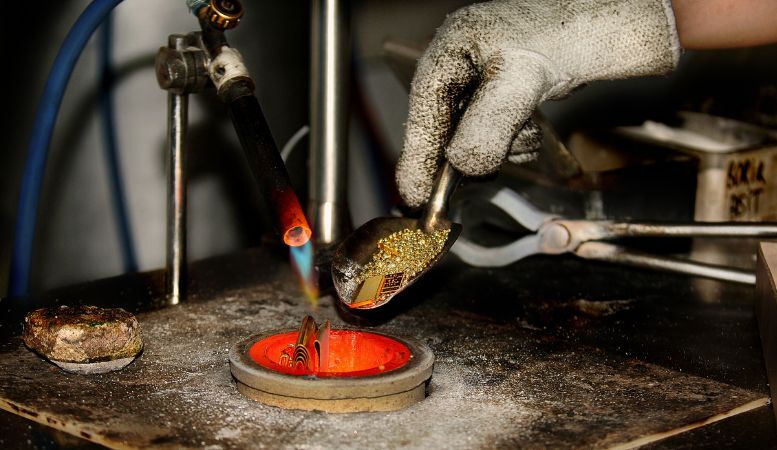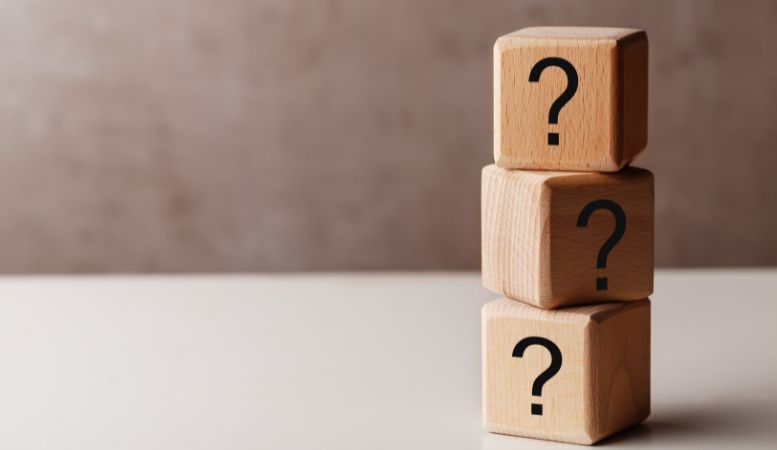So you’re thinking about buying gold from a private seller, or you’re wondering if you can sell some gold jewelry you’ve been hoarding in your closet for years. But you just have one concern: is the gold real? And how would you know?
Knowing how to tell if gold is real is absolutely crucial to your decision to buy or sell. Gold is pricey, and you don’t want to risk wasting your money on fool’s gold. You also don’t want to sell real gold jewelry for less than it’s worth.
Thankfully, there are several indisputable methods for testing the authenticity of gold.
Physical Tests to Determine Authenticity

Gold has several unique physical properties. Testing for the presence or absence of these properties is one of the most straightforward methods of determining whether gold is real or fake.
Before you begin, understand the difference between real and pure when talking about gold. An object may fail the tests below simply because it is not 100% pure gold. But that doesn’t mean it doesn’t contain gold.
Magnet Test
Pure gold is not magnetic, so if your gold jewelry or bullion sticks to a magnet, it likely contains traces of other metals and is not completely pure.
Hold a strong magnet against the gold item. If it doesn’t stick, that doesn’t necessarily confirm that the gold is pure — it just shows that it doesn’t contain any magnetic metals. But if it does stick, you can stop your testing there; your gold isn’t pure.
Rubbing Test
Have you ever worn jewelry that left a dark green or black mark on your skin? Rubbing the gold on your skin and looking for this type of mark can help you identify whether the gold is fake. Pure gold does not leave any kind of mark on the skin.
Squeeze the gold in the palm of your hand for several seconds, then look for any type of discoloration. If you’re testing gold jewelry you already own, wear it for a few days and keep an eye out for this type of mark.
There are other variations of the rubbing test that may work; for example, some experts recommend applying liquid foundation makeup to your face, then rubbing the gold on your forehead to see if it leaves a black mark. If it doesn’t, the gold is likely real.
These methods aren’t foolproof, but they can help you nail down your gold’s authenticity in addition to the other tests.
Ceramic Scratch Test
If you have a ceramic plate or coaster, you can try the scratch test to determine the authenticity of the gold. Scratch the gold against the ceramic surface. If it leaves a gold trail behind, it’s likely pure gold; if it leaves a black trail, it probably contains other metals.
Float Test
Another simple method for how to tell if gold is pure is the float test. Simply drop your gold object in a container of water. If it floats or doesn’t quite touch the bottom, it’s not pure gold.
Nitric Acid Test

If you want a more scientific method of testing your gold, consider buying a nitric acid test kit online. These kits are relatively inexpensive and easy to use. You can test your gold with these steps:
- Use a nail file or a black stone to create a small scratch on the gold in an area that wouldn’t be noticeable.
- Place a drop of nitric acid on the scratch.
- Watch for a reaction; if you don’t see one, the object is likely pure gold. If you see the scratch turn white or green, the object probably contains other metals.
Nitric acid is flammable and can irritate the skin, so take extra precautions when working with this substance. Follow the instructions in the kit closely and wear protective gear.
Density Test
Real gold has a standard density of 19.3 grams per milliliter. If your object also has this exact density, you can assume it is pure gold.
You can measure the density of your object using a method called displacement. You’ll need a scale that measures in grams and a container with milliliter markings, such as a beaker or measuring cup. Follow these steps to determine the density:
- Weigh your object and record the weight in grams.
- Add water to the container and note the milliliter marking.
- Place your gold in the container of water.
- Note the new volume of the water in milliliters.
- Subtract the first measurement from the second measurement to determine the volume of the gold.
Now you’ll just need to do a simple calculation. The formula for density is D = mass/volume. Divide the weight of the object in grams by the volume of the object. If your answer is 19.3 or close to it, your object is likely gold.
Analyzing Hallmark Stamps and Markings

Aside from the physical tests above, you can examine your gold with your eyes to look for signs that it is real.
Real, pure gold usually has a hallmark stamp that the gold mining company placed on it indicating its purity and composition. Look for any of these hallmark stamps that detail the gold composition:
- GP (Gold Plated)
- GF (Gold Filled)
- GE (Gold Electroplated)
- GEP (Gold Electro Plated)
- HGP (Heavy Gold Plated)
- HEG (Heavy Gold Electroplated)
These designations indicate that the gold isn’t pure; the object is just gold-plated. Some gold objects also contain markings about their purity, such as:
- 24k
- 18k
- 14k
- 10k
You can think of these figures as representing the number of parts of gold in the object out of 24 total parts. A 24k gold object is pure gold, whereas an 18k object contains 75% gold and 25% other metals.
Keep in mind that hallmark stamps can be falsified. The presence of a hallmark stamp alone may not be enough to prove or disprove that your gold is real, but it can help steer you in the right direction.
Use of X-Ray Fluorescence (XRF) Testing Devices
If you want to be very sure that your gold is pure, consider conducting X-ray fluorescence (XRF) testing. You can purchase a portable XRF device to test the metal yourself or take it to a jewelry shop or gold seller for verification.
XRF devices provide a layer analysis of the composition of an object. The X-rays cause the object to emit fluorescence at specific energy levels, indicating its atomic structure. The device then matches these energy levels to different metals, including gold.
Depending on the XRF device you use, you can expect this measurement to provide relatively accurate results.
Testing Gold Purity With Fire Assay Methods

Fire assay is the standard process gold mining companies use to test the purity of gold. If you want to know how to tell if gold is real, this method is invaluable — but it does involve melting the gold, which isn’t suitable for jewelry or other objects that you want to keep in a specific shape.
With a fire assay test, you (or a testing company) would melt a sample of the gold and mix it with lead oxide and other control chemicals. You would then let the mixture cool and pour it into a mold. The lead would sink to the bottom of the mold, allowing you to chip it off.
Then, you would remelt the mixture and pour it into a specialized container that absorbs lead. Only the gold would be left behind.
Fire assay is currently one of the most accurate methods of testing gold. It’s also relatively inexpensive; you can find companies willing to test for as little as $25 per sample. You can also buy your own test kits for around $60.
Importance of Buying From Reputable Sources
Testing gold may feel like a lot of trouble. If you’d rather not go through the hassle of confirming the purity of gold bullion or coins, you can gain the same level of confidence when you buy from a reputable seller.
The best gold dealers on the market have very strong reputations for only selling pure, authentic gold products. The gold you buy from these companies comes with a certificate of authenticity to back up the company’s claims. Many companies also insure their products during transport for the full value of the gold, indicating that the company knows its products are worth the price tag.
So how do you find reputable gold sellers? Look for these qualities:
- The company has been in business for many years.
- The company offers several types of gold products.
- The company is an authorized distributor through the U.S. Mint.
- You see mostly positive reviews of the company across platforms like Google, the Better Business Bureau, and Trustpilot.
FAQs

How Can You Tell if Gold Is Real at Home?
You can complete any of the physical tests above from home to tell if gold is real. You’ll probably want to use at least a few tests in combination rather than relying on the results of one test.
Start with the tests you already have supplies for, such as the float test, magnet test, and rubbing test. If any of these methods indicate that the gold isn’t pure, you won’t have to waste money on additional supplies.
If all of the at-home methods indicate that your gold may be real, but you still aren’t sure, you can proceed with one of the more scientific tests, such as the XRF or fire assay test.
How Can You Determine if Gold Is Real When It Has No Markings?
Many gold products don’t have hallmark stamps or other markings, but you can use other methods to determine their purity and authenticity. Start by ruling out that the gold isn’t fake by seeing if it floats in water or leaves a mark on your skin when you hold it. Then move on to the other physical tests above to further examine the object’s physical qualities.
Is White Gold Real Gold?
White gold is real, but it’s not completely pure gold. Usually, this metal consists of about 75% gold and 25% nickel and zinc. This would mean that it is an 18k gold item.
How To Tell if Your Gold/Silver Bullion Is Real or Fake?
You can read the above to learn how to tell if gold is real. For silver, you can:
- Look for a hallmark stamp or engraving that indicates the silver’s composition.
- Hold a magnet to the silver object. If it has a strong magnetic effect, it probably isn’t pure silver.
- Set an ice cube on the silver. If the ice melts faster than you’d expect, it may be pure, as opposed to copper- or iron-core objects that don’t affect the melting speed.
Reach out to Oxford Gold Group to learn more. Call 833-600-GOLD today.








